Shortbread is a sticky subject!
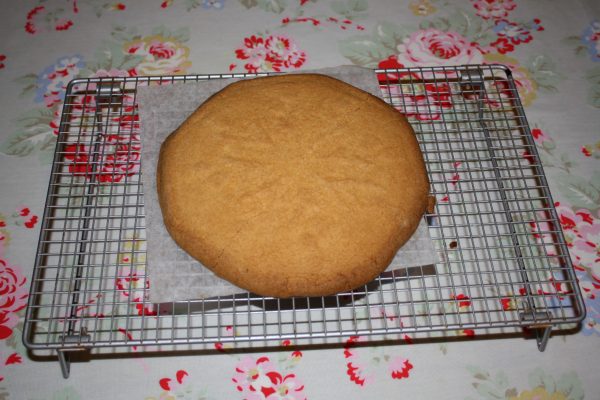
So, yesterday I made shortbread biscuits. The reason I made them was to test that they would work as individual biscuits. I have had some shortbread nightmares recently when trying to do one big tray/mould bake.
My friend Astrid emailed me :
“ I’ve been trying to perfect my shortbread technique and it’s not going too badly (I find the rubbing technique works much better than creaming for me) but I wanted to use a mould I bought in a cook shop in Scotland and it’s not working: the dough sticks to the mould (it’s ceramic) and twice now I’ve had to scrape it off with a spatula, which defeats the object of having a patterned mould in the first place! Is there a different recipe I can use or a way of doing it so this doesn’t happen?”
So I set about finding a recipe that I thought would work best in a ceramic mould (I also treated myself to a cute Scottish Shortbread mould from Lakeland- thistles and all!)
Round one
I used ‘Cake release’ which is a great non stick product (that I use with a lot of success with cakes) and applied it to the ceramic mould with a pastry brush so I could get into all the nooks and crannies.
To make the dough I used the rubbing method that Astrid used, popped it in the fridge for an hour then pressed it into mould.
and baked it in the oven until it was a light golden brown colour.
But it didn’t work! It got well and truly stuck.
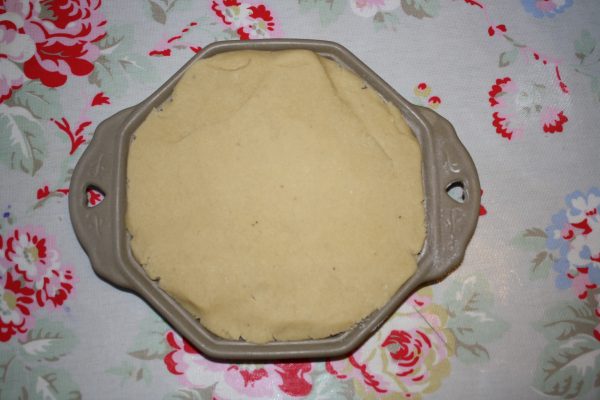
Round two
So, I tried again!This time I blended the ingredients in the food mixer, creaming the butter and the sugar together before I added the dry ingredients. I chilled the dough overnight, greased the mould with butter and dusted it with plain flour, removing any excess. Then I rolled out the dough and pressed it into the mould lightly and baked it. Guess what? It got stuck again. It did taste good though – I tried to remove the shortbread with a spatula and little pieces popped out. Don’t worry, none went to waste.
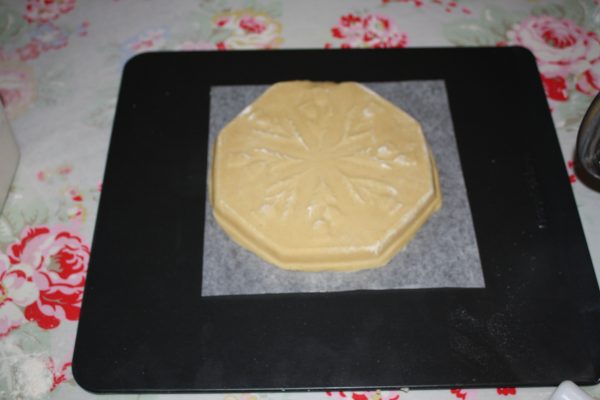
Round three
Okay, so by now I was getting pretty annoyed. Why is it sticking? What am I doing wrong? I searched on Google and I messaged every Twitter foodie I could find. No one came up with any better ideas than the ones I had already tried. So I thought I’d go straight to the experts in baking equipment. I spoke to Lakeland direct! Their advice was….
“Use a slightly lower heat and cook a little longer, to prevent sticking. The dough needs to be firmly pressed into the mould. It should be a toasty light brown when cooked. Be sure to let the shortbread cool in the pan before trying to remove.”
Well I decided I would give it one final shot using all their advice. And here’s the result!
I buttered the mould (or should I say caked it in butter?)
Rolled out the shortbread, placed it in the mould and pressed it into place. Baked it, left it to cool, placed it back in the fridge for an hour or so and….
it STILL got stuck!!!!
So, I’m stumped! Do you have a clever trick for getting shortbread out of a ceramic mould? What’s the knack! If you can shed any light/ experience/ help, we (Astrid and I) would love to hear your tips! Please post a comment below.
Many thanks,
Emma
Enjoy!
More biscuits and cookies you may enjoy
Dairy Free chocolate chip cookie recipe
Fast from the freezer Double Chocolate Chip Cookie Recipe
Some seriously chocolatey cookies
The easy way to make Viennese biscuits
How To Make Boozy, Gooey, Raisin, Choc-chip, Oat Cookies
Why I don’t love shortbread (Part two)

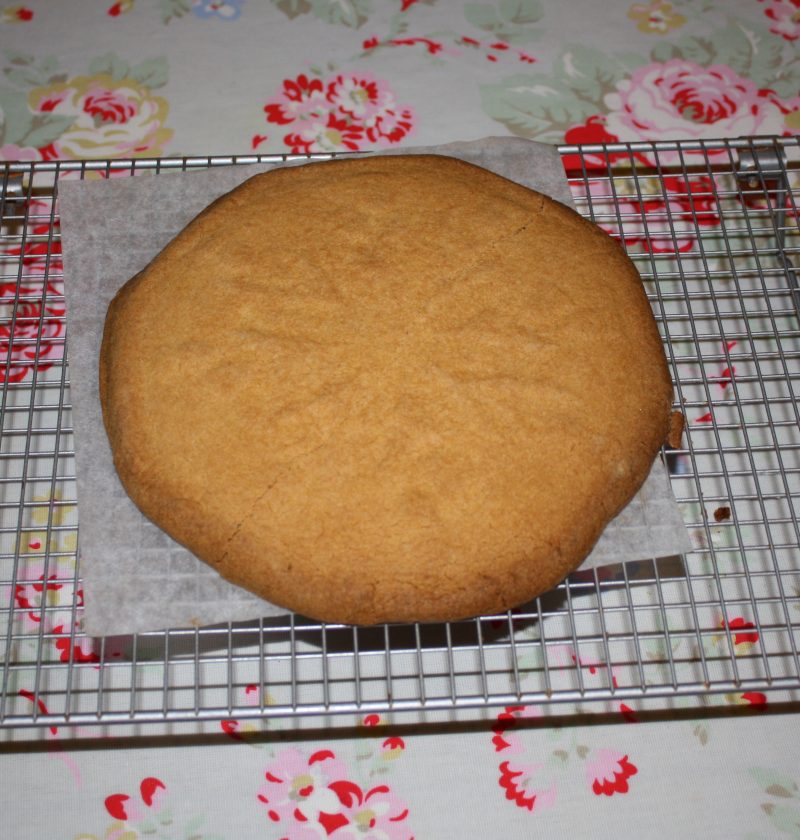
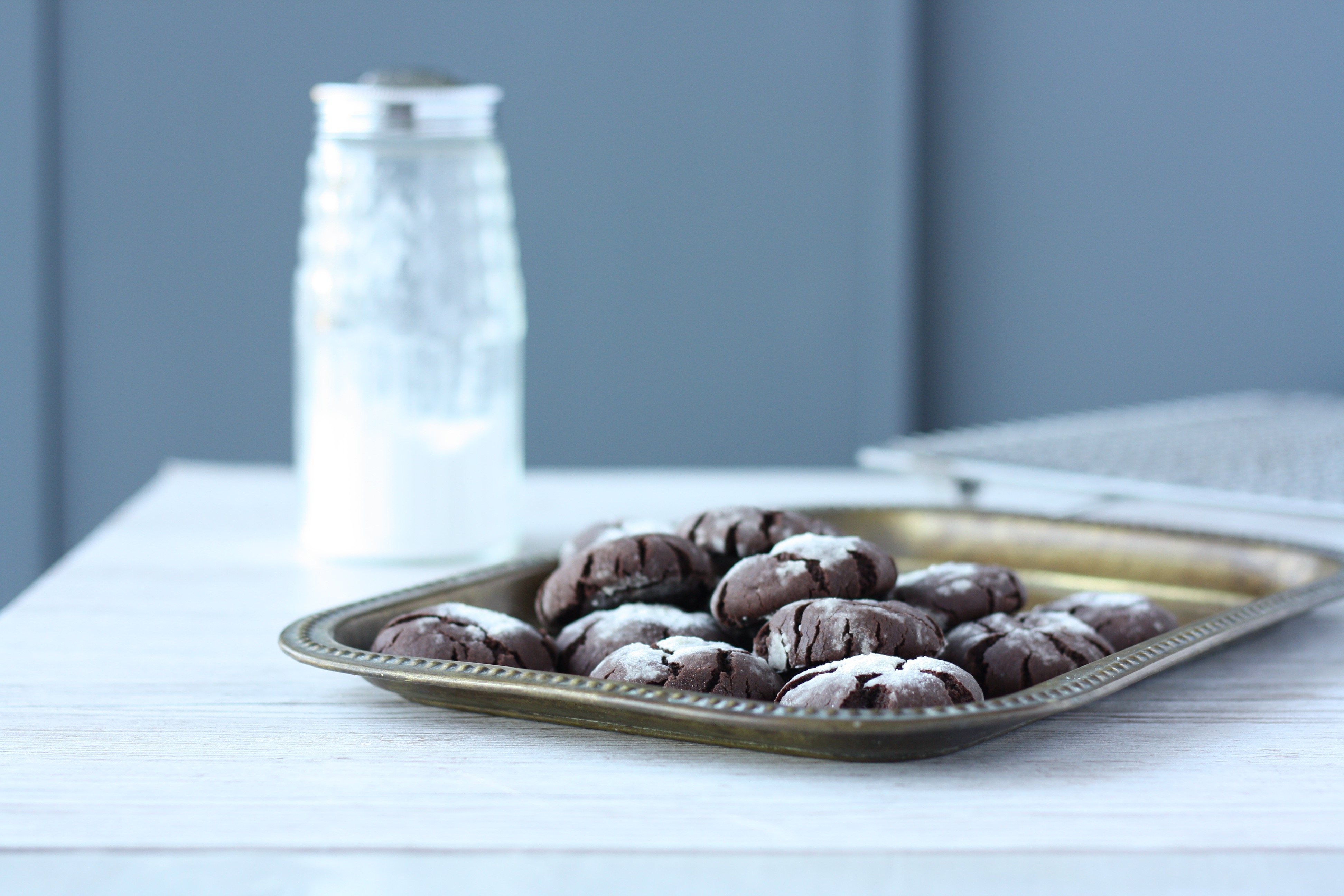





Hehe! Brillaint x
I have used both the recipe on the Lakeland mould box and a recipe with smaller quantities so it only goes up to the 1st ridge and had massive non stick success each time. I added lemon zest and cardamon each time and am addicted! Do not try to lever it out and DO NOT grease or flour the mould. As a Pampered Chef StoneWare veteran also don’t use detergent when you wash it either as just running it under hot water and scrubbing with a brush means that every time you bake your already really buttery shortbread, you mould will become ‘seasoned’ and won’t stick. For the turning out, let it cool properly! Put upturned mould on a plate and hit hard with the heel of a knife or other utensil and it will just plop out. Traditionally before baking, dock the surface of the shortbread with a fork. I did the mixing in my KitchenAid mixer using the paddle beater, I beat the butter and sugar together before gradually adding the flour to moderate beating and adding flavour. I substitute semolina for some of the flour too for textural interest. I turn up the speed to make buttery rubble and floury remnants and pile this relatively dry mix into the mould (doesn’t look anything like your dough pic!) ani squash it in until it looks like shortbread using a spoon or the heel of my hand. Hope this helps as it is well worth it.
Thanks for your tips. I will give them a go one day. That is if I still have the mould. I think I may have given it away after SO many disasters AND I don’t even like shortbread that much so I can’t even scoop up the scraps. But I’m not one to be beaten!!!!
EmmaMT
I recommend using a stand mixer and cold butter as your dough looks like the butter got too warm. If you don’t have a mixer, cut the butter as small as poss then add to sugar and flour and cut with knife again or a pastry mix tool may help you to handle as little as poss
I’ve actually never tried it as a complete tray – and until some bright spark comes up with a good comment and solution I think I may stick to the individual ones. If you get stuck – heaven knows where I’d end up!
I’m not sure it will work, but it might be worth a go. I would still go with Lakeland’s advice about cooking it longer and lower so you really dry it out, and I would use a liberal amount of oil rather than butter. When it comes out of the oven, leave it to cool for a couple of minutes, then turn it upside down onto a cooling rack and let it cool completely in the tin (as you would a cake). With any luck, gravity will do its job and you’ll be able to lift the tin off. Failing that, leave the ceramic behind and go for silicone or metal. I hate cooking with ceramic, something always seems to go awry!
Thanks for that. I think I will wait till Theoda is home to try again as she loves shortbread and I don’t think I can face eating anymore right now having consumed three attempts which all turned to crumbs when I forced them out of the mould! Once you start you can’t stop!
I’ve been looking forward to this post! 🙂 I may give it a go and share how it goes 😉 x
That would be great! I’m all shortbreaded out!!!
I’d love to hear how you get on.
EM
X
I tried the Kilo version of this pan and found the traditional scottish sandy recipe worked well – no spray required
1 cup butter
1 cup sugar
3 cups flour
get to sandy and press into dish prick with for and bake 150 deg c for 35-40 min
run butter knife around mould when hot leave to cool to able handel with hands then turn out
Thanks Jeremy. I’ll be giving this a go at the weekend!
EmmaMT
I tried your recipe yesterday and it still didn’t pop out! I think I may be shortbreadedly challenged!
I did however have tons over from the mould which I put into a silicon mould. (even I can get it out of that!) and it was deeeelish!
Thanks so much
EmmaMT
I made shortbread on the weekend using what looks to be the same mould for the first time. It said to wash the mould first and then dry immediately, which I did. (Not sure if this makes any difference, but the mould was damp). I forgot to grease the mould. My recipe doesn’t call for chilling so it was straight into the preheated oven at 160 Celsius for 25mins. I was a bit concerned when I took it out – didn’t look like it would budge. Tried a couple of times to turn it out unsuccessfully. Left it 10-15mins to cool more then ran a butter knife gently around the edge and tried again. Hey presto – perfect shortbread. Hope this helps 🙂
Thanks Amanda. Can you let me know your recipe please? I had another go on this yesterday. It is sitting soaking in my sink as I type as I couldn’t even scrape it out this time $%%^$%£$@£$!!!!!!!
I will not be defeated though so I will give your recipe a go. Third/fourth/fifth time lucky maybe?
Thanks
EmmaMT
Thank you for this hint. I did the same as you did with the exact same mould and mine came out too. Cheers.
Lightly flour the mould, press the shortbread dough into it and level with a rolling pin, then turn it out onto a baking tray to bake (patterned side up). In other words, the mould is used to make the pattern but not to bake it in.
Ooooooh I didn’t think of that! Thanks. I’ll give that a go!
EmmaMT
Hi,
I have recently got a wooden mould for making shortbread and have been looking into how to do it. I’m under the impression that you don’t actually cook your shortbread in your mould. You need to make your dough, chill it for awhile in fridge, then press it into your mould, chill again for a good half hour then give your mould a good tap and turn it out. Then it’s ready to go in the oven. ……..I might be talking nonsense, however, as I’ve not actually tried it yet, that’s my plan for later.
Hope this helps, everything else you are doing, flouring mould etc is spot on.
Ahhhh. That makes a lot of sence. I’ll give that a go.
I’ve tried all sorts of ways now- lots of advice has been sent in to me here, but none so far has worked so I hope your way works!
Thanks so much
EmmaMT
Hello Emma,
I had the same problems like you until I really let the baked shortbread sit on the window sill (2 or 3 degrees minus) for an hour and then I just loosened it around the edges and it came out perfectly!!
Susi
Oooooh thanks for that. school is closed tomorrow so I think I’ll be able to give that a go AND keep the kids quiet at the same time!
EmmaMT
Hi, please, please don’t bake the shortbread in the mould. You only use it to shape the shortbread before placing on a piece of baking paper on a baking tray and baking as it it. You can trust me, I’m 100% Scottish and have been making shortbread for the past 25 years.(1st thing they taught us in cookery class at school!)
Also, having had wee look at your pictures above, gentle tip, try not to be poking it in hard to the tin (i see big finger imprints in your photo!). It’s best to try and handle the dough as little and gently as possible, otherwise it will be tough to eat. Happy baking!
Suzie Q
Thanks Suzie Q, That’s so helpful.
I’ve just had a go doing it your way and it does come out with a little persuasion. I managed to over bake it (long story to come in a future post!) and the pattern from the mould all but disappeared. I’ve now got two more ready to go into the oven in the morning. One is chilling in the fridge and the other is in the freezer. Hopefully they will come out right. I’ll let you know how I get on.
Thanks for your advice. I love it, especially the “I’m 100% Scottish and have been making shortbread for the past 25 years.” bit! If you can’t help me no one can and I am going to give up!
Update soon.
EmmaMT
X
Hi Emma,
Wow, can’t believe you’ve tried making it again already – that’s great. Don’t you find its tasty a bit overcooked anyway?…lol.
It might help for you to line the mould with cling film first. I only use a sandwich cake tin to shape mine into a 7inch circle, but i line it with cling film and it makes it much easier to lever it out. I then mark it into 8 with a knife, and decorate it with a fork. It tastes good but looks pretty amateurish. Perhaps I should be investing in a mould and try to up my game!
Glad i found your site. I think its very good with lots of lovely creative inspiration. My range of baking is pretty limited, so I’m hoping to be inspired in the cake department!
SuzieQ
Oh Suzy, Suzy Suzy! I think I may have to finally give up with the whole mould thing! The pattern just doesn’t work. As the shortbread bakes it rises and the pattern disappears. I think I will do it your way in future. Clingfilm, a light dusting of sugar and a bit of pre cutting.
Who needs a mould anyway!
Thanks for all your advice. Very helpful.
EmmaMT
I have 2 of these molds and have had great success. I follow the gluten-free recipes over at shortbreadpan.com. They make the pans. I use clarified butter to grease the molds with my fingertips. I don’t use paper towels to grease as they leave paper residue. I bake the shortbread in the pans on top of a baking stone that is about 6 inches up from the bottom of my oven. I let the shortbread cool for 15 minutes then flip the pan over and drop it onto my wooden cutting board. I drop it from about an inch or two above the board. It comes out perfectly. Sometimes, I’ve had to drop it a few times. They tell you to expect that on the site. Then, I cut it with a pizza chopper into pie shaped pieces. The almond gluten-free recipe is delicious. I served it to friends and they all wanted the recipe.
Thanks for that. I’ll have to give it a try some time. Fifth time lucky as they say!
EmmaMT
HI Everyone,
I read all your comments with interest. I have had a thistle mold for shortbread for years and when I did use it, it was a disaster!!!!!
Reading all your advice, I will try again.
Thanks for the info. Wish me luck
Joy
Good luck!
I know this is an old post, but for anyone that comes across this post…I know why your shortbread is sticking to your mold! You don’t coat your mold with fat/oil/butter, you coat it with a dusting of dry flour! This is what professional bakers use when lining their cake pans, and it is amazing. Sprinkle your shortbread with sugar when you take them out to cool and they’ll be perfect.
As someone noted above, you can also choose to use your mold as just a mold and not a baking dish, like old fashioned wooden molds. (I think flour works best to avoid stickiness here too!)
Hello,
Thanks for that. I don’t think I actually still have the mould. I officially gave up after about 10 attempts – and I am not normally defeated! But if I still have it I will give the old flour dusting a try! My daugher would be thrilled. She absolutely loves shortbread.
Thanks for taking the time to leave a comment. It’s much appreciated.
EmmaMT
Oh Honey, You have to SEASON new stoneware before it becomes non-stick! You need to treat it like new cast iron pan and slather it in butter or oil and bake it at a very low temp. Heck you could even cook some bacon in it a few times before trying shortbread again – could be yummy too! I found this link http://www.instructables.com/id/Seasoning-stoneware-baking-pans-and-pizza-stones/ that may be helpful. Good luck and I will check in when my snazzy thistle pan arrives. Cheers, Jean
Oh I am so over the shortbread. There’s only so many times you can try and lets face it the packaging should say if you need to season the mould don’t you think? Thanks for your advice though. I’ll remember it for next time!
EmmaMT
The thing is…shortbread, like many Scottish sweets are really a dark art. Most only have 3 ingredients and somewhat simple instruction that can’t help but set you up or failure. What most perceive as a glint in Granny’s eye is really a sick competitive – Go on – I dare ya, go challenge! Hence, ” Och, aye..ya gis press a few tangs in da mould” instructions without realised they are with holing freaking vital information to re-enforce “Och, yill neer git it hen” response! Try again. properly seasoned, and nail those suckers!
Hi Folks
Please don’t give up on the shortbread. As said before, please just follow this advice, from a real Scot, living in Scotland, who has been baking Scottish shortbread for 30 years:
THE MOULD IS ONLY FOR SHAPING THE RAW SHORTBREAD – YOU DO NOT COOK ANYTHING IN IT!!!
Place the raw shortbread in the mould, turn it out (like a sand castle on the beach!) place on a baking tray and bake on low temperature until light straw coloured and done.
Bake and enjoy.
SuzieQ x
I used the same mould you have, picked it up at a garage sale and used it for the first time today. I don’t think it’s ever been used before, but the ceramic surface had a near-gloss that indicated it was pre-seasoned.
I went to the brown bag website and used their recipe – 1cup flour, 1/2 cup room temp butter, 1/3 cup powdered sugar. I used melted butter with a pastry brush on the mould, carefully pressed in the dough without bothering to chill, and pricked the top of the dough all over with a fork. Baked for 30 minutes at 350 degrees until golden brown.
(then I came and perused the web while baking, and came across this blog, and feared for the worst…)
But it was fine. When I pulled it out of the oven, the browned edges had pulled away from the sides of the pan. I did as the recipe instructions advised, and dropped the pan facedown onto a wooden cutting board. It came out pretty well, only a little of the detailing stuck to the pan. Very tasty, too.
I think it’s your pan, not you.
Oh here am I , just about to use my shortbread mould for the first time, Having read every comment from top to bottom, has given me a wry smile Emma. Such resilience in the face of ongoing disasters. I cannot imagine what it did to your waistline. Only joking, wish me luck – watch this space. And finally many thanks to all the contributors, now will I just flour the base or butter and flour??? Decisions Decisions.
Eeerrrr! You had it right the first time! This blog has me running three times a week! I just can’t turn a cookie or cake down!
EmmaMT
Hi Marilyn. How did the shortbread turn out? You know its not meant to be cooked in the mould? The mould is just for shaping it prior to cooking. I occasionally stick a reply up to share this. I am a Scot and have been making shortbread my whole life. You girls in the USA have got to trust me on this one! X
You DO cook in the mould if it’s made of Stoneware but not if it’s made of wood!
Just in case this helps anyone…
I used the following recipe: 1 cup flour, 1/2 cup butter, 1/4 sugar.
Butter was room-temp and I decided to cool the mixture in the fridge slightly after combining everything. I was going to try just flour in the mould – but it didn’t really stick and just seemed to fill in the details, so I ended up washing it in water, drying it in the oven, letting it cool (even put it in the fridge a bit). I sprayed liberally with cooking spray, pressed my mixture by hand into the mould – too crumbly to roll. I cooked it at a low temp 300 (150) for almost an hour. Could have done a bit less as it was pretty brown (45 would probably be great). After running a knife round the edge and cooling for 10 minutes, I managed to turn the mould out successfully with a couple of bangs. Couldn’t really see the detail very well – possibly due to the darker colour, and maybe I didn’t press the dough down firmly enough – also there was the odd crumb stuck to the mould. Good enough for me!
I have just bought a Lakeland shortbread mould…..After reading all the reviews I am wondering if I have done the right thing…..I will give it a try and hope for success !
So, how did you get on with your shortbread mould? Better than me I hope!!!
EmmaMT